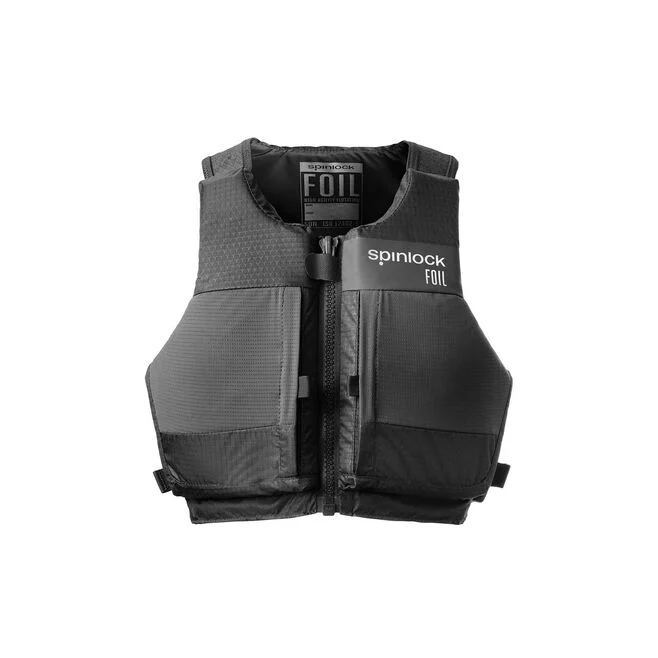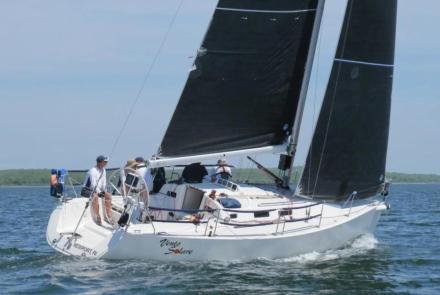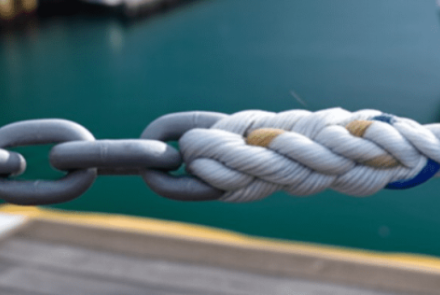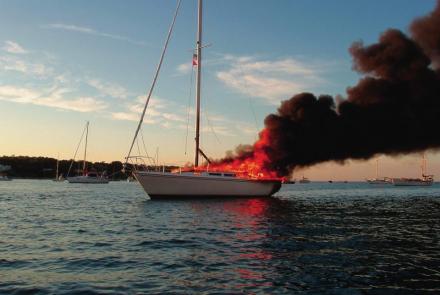The “Final Rule” from the Coast Guard on Lifejackets -- Life Jackets #6
6: The “Final Rule” from the Coast Guard on Lifejackets[1]
“Safety Moments, in support of the Culture of Safety”
By Chuck Hawley, San Francisco Station, 7/1/2025
The following is article 6 in a series of articles on lifejacket[2] performance, carriage requirements, standards, and a focus on the best lifejacket for offshore sailing and cruising. See the past articles at the cruisingclub.org/safety-seamanship website.
For approximately two decades, the lifejacket industry (formerly the PFDMA and currently the LJA), Underwriter’s Laboratories, Transport Canada, and the US Coast Guard have been working on improving the standards for lifejackets sold in the U.S. and Canada. Briefly, the goals of this effort have been the following:
- Easier to understand labels and selection information using graphics and multiple languages.
- A common standard between Canada and the U.S. so that lifejackets made under the new standard would be recognized by both countries.
- The introduction of approved lower-buoyancy lifejackets (Level 50) to improve the “wear rate[3]” of lifejackets on recreational boats, resulting in a reduction in recreational boating fatalities.
- The combination of inherently-buoyant (foam) lifejackets with hybrid and inflatable lifejackets in the same standard.
- Five levels of performance/buoyancy so that boaters could be encouraged to use lifejackets with sufficient performance for the conditions.
What is confusing is that while the industry and regulatory agencies work together on creating a standard for lifejacket manufacturing and performance, it’s the Coast Guard and Transport Canada, and possibly the State Boating Law administrators who decide what lifejackets are required:
- When they are required to be worn?
- At what age children must wear lifejackets?
- How are the requirements for recreational vs. commercial vessels different?
Therefore, it was somewhat of a shock to the industry when the Federal Register, Vol 89, No 235 December 6, 2024, appeared under the title “Lifejacket Approval Harmonization”. The roughly 50 page entry was strikingly different from what many experts in the industry had anticipated, due not so much by what it included, but for what it did not include. As we’ve discussed in previous articles, it was anticipated that the new “harmonized” North American standard would describe five levels of performance of lifejackets that would be appropriate for a wide range of users and conditions.
The Final Rule
However, the published “Final Rule” only describes the use of two levels of lifejacket performance for recreational use (and a third for commercial use), and neglects to mention the high buoyancy lifejackets, whether inflatables or inherently buoyant models, with or without harnesses, that are in common use among CCA members and other offshore sailors. While it doesn’t prevent the use of Level 100, Level 150, and Level 275 lifejackets among sailors, these products may be labeled as if they have the same buoyancy as a Level 70 dinghy or fishing vest with 70 Newtons or 15.7 pounds of buoyancy. In other words, the final rule describes the minimum performance standards that meet the legal carriage requirements, but does not address the need for increased performance (buoyancy, freeboard, heave period, airway protection) that is vital for survival in rough conditions.

Level 50 Flotation Aid
What it does do, however, is to allow recreational boaters to use Level 50 (11.2# of buoyancy) flotation aids with the following caveats:
- The design of the flotation aid keeps the user’s airway above the water (as proven during testing.)
- The user must know how to swim.
- The flotation aid must be worn to be counted in the vessel’s inventory.
- There must be “help or rescue nearby.”
The approval of Level 50 flotation aids “provides a critical level of oversight to the currently unregulated Level 50 competition watersports PFDs, resulting in safer products for the public.”[4] In other words, various groups of boaters were already using unapproved Level 50 flotation aids (watersports, kayaks, dinghy sailors) but were under the radar of marine law enforcement. Now it will be legal to wear an approved Level 50 flotation aid for all sorts of boating activities, including operating any recreational boat, given the caveats above.
Note: at some point in the development of the standards, it was presumed that Level 50 flotation aids would only be legal when participating in certain activities on the water (kayaking, waterskiing, towed watersports) and therefore many websites claim that Level 50s are not legal when operating a boat. This is “old” information, and according to our reading of the Final Rule, it doesn’t restrict the use of Level 50s to specific aspects of recreational boating.

Level 70 Flotation Aid
The North American Standard adds a performance level that is incremental to what is used in the ROW (Rest of the World), or at least the countries that use ISO standards. The ISO 12402.x standard for lifejackets skips over the Level 70 flotation aids and goes right to Level 100. However, since the U.S. is awash with millions of lifejackets that have about 70 Newtons (15.7#) of buoyancy, the new North American standard recognizes this with an incremental performance level: Level 70. It’s difficult to say whether someone might drown while wearing a Level 50 flotation aid but not with a Level 70 flotation aid, but generally buoyancy is related to life saving performance, so the extra 4.5# of buoyancy will be beneficial in rougher conditions.
Unlike the rules regarding Level 50 flotation aids, you don’t have to know how to swim, or be near help or rescue, nor wear a Level 70 to have it be counted in your inventory. One exception is that if your Level 70 flotation aid is inflatable, then it must be worn to be counted, and it’s only recommended for .
When you hear Level 70, think about all of the vest-style lifejackets that you’ve worn that are made for fishing, skiing, sailing, and general recreational boating, which have about 15-17# of buoyancy. In the future, what we know as Type IIIs in the past will be Level 70s.
While it used to be true that inflatable lifejackets were only for those 16 years or older, this requirement is no longer stated. However the Final Rule says “an inflatable PFD intended for wearers less than 16 years of age must automatically inflate, must not require secondary donning, must be worn, and must include a warning statement about adult supervision.” Secondary donning means that the product, when inflated, is required to be pulled over the wearer’s head; think belt pack models. Those are not OK for wearers under 16 years old.
Watersports (skiing, tubing, wakeboarding) flotation aids fall into a slightly different category. Due to the likelihood of high speed impacts with the water, if you’re using a lifejacket for those activities, it will be designated as a watersports vest. This means that it will have to have three encircling belts around the torso, or two belts and an additional method of closing the front of the vest. Look for the watersports icon on the vest when you buy it.

Level 100 Flotation Devices
Yes, there will be Level 100 flotation devices, but under the published Final Rule, they will be only legal for commercial vessels. Since they will say on the label they are legal only for commercial vessels, they will not count towards the carriage requirements on a recreational boat.[5]
Interestly, commercial vessels will now be able to source single-chamber inflatable lifejackets to meet this standard, where prior to this, all inflatable lifejackets on commercial vessels had to have two separate chambers and two inflation systems.
So is there a way around this rule so that higher performance lifejackets can be used on rec boats? The manufacturers that I spoke with are considering making lifejackets with the performance of a Level 100 flotation device, but labeling it Level 70. Apparently, bafflingly, that might solve the problem.

Level 150 and Level 275 Lifejackets
For about 35 years, moderators and speakers at US Sailing Safety at Sea courses have extolled the advantages of 150 Newton inflatable lifejackets with integral harnesses. These lifejackets have between 33.7 and 40# of buoyancy and provide excellent in-water performance in rough conditions (turning ability, freeboard, heave period.) It’s the “uniform” we wear when we go offshore. However, the Coast Guard, despite literally years of standards development, has omitted these lifejackets from their Final Rule. The way around this, possibly, is to offer lifejackets with Level 150 (or Level 275) performance and buoyancy, yet use the designation of Level 70. Yes, this is the same “solution” as discussed for recreational boaters who want to use the Level 100 “commercial” models on their boats. It would be really confusing for the buyer, but would simplify things for a boarding officer who wanted to check for lifejacket compliance.
Remember that previously-approved lifejackets with higher buoyancy will still be legal, and may be made under the previous rules. They just don’t fit into the new standards as far as we can tell.
Conclusion
Despite almost 25 years of development, meetings, research, and so forth, the “new” lifejacket standards are confusing and bound to be mis-interpreted by boaters. They provide less direction for recreational boaters, although they do offer more choices for calm water use due to the introduction of Level 50 Flotation Aids. Level 50s will likely have some positive effect on wear rate, which is in turn going to lead to lower boating fatalities. However, the Coast Guard could have accomplished that goal while providing direction for boaters who operate far from assistance and in unpredictable conditions. It will take a big effort by marine safety experts to get the message out about which Level 70 product to buy. Ideally, the Coast Guard would recognize the confusion that the current rules cause the recreational boating market and add in the additional performance levels that were originally planned.
I realize that much of this Safety Moment sounds wishy-washy, as if things will change in the future, which they will. We don’t know what the changes will be or when they’ll happen. One thing is certain: merely searching on the internet, using AI or just Google, and believing what you find is fraught with problems. Many websites, even those which are funded by Coast Guard Safe Boating Grants, are in conflict with the Final Rule. Examples include:
https://www.usps.org/images/Exec/Safety/Life_Jackets/2020-05-28_New_Life_Jacket_Labels_and_Icons.pdf
https://wow.uscgaux.info/content.php?unit=013-07-02&category=2016-stats
https://uscgboating.org/recreational-boaters/life-jacket-wear-wearing-your-life-jacket.php
This last site from Coast Guard Boating was the only one that listed the Level 50 Flotation Aid as being legal to wear, but then left it off their buoyancy charts, so I am not sure what they intended.
The Cruising Club of America is a collection of accomplished ocean sailors having extensive boat handling, seamanship, and command experience honed over many years. “Safety Moments” are written by the Club’s Safety Officers from CCA Stations across North America and Bermuda, as well as CCA members at large. They are published by the CCA Safety and Seamanship Committee and are intended to advance seamanship and safety by highlighting new technologies, suggestions for safe operation and reports of maritime disasters around the world.
[1] In the Coast Guard Final Rule that is the source for this paper, the Coast Guard notes that while life jacket (two words) and lifejacket (one word) are both in common use, they have decided to standardize on the one-word version, which is consistent with the new ANSI/UL/Transport Canada standard 12402.
[2] The marine safety industry has been all over the map (chart?) regarding what to call flotation devices. The term Personal Flotation Device, or PFD, introduced in the 1970s, was an attempt to describe different kinds of life vests, lifejackets, and so forth by creating five different categories: Type I Offshore lifejackets, Type II Nearshore Life Vests, Type III Flotation Aids, Type IV Throwable Device, and Type V Special Use lifejackets. The use of “types” was eliminated in 2014 by the Coast Guard for new products, although there are obviously products in use that still have that designation. The new “Levels” of lifejackets consider Level 50 and 70 to be Flotation Aids, Level 100 to be a Flotation Device, and Level 150 and 275 to be Lifejackets.
[3] The “wear rate” of lifejackets is measured annually and published in the National lifejacket Wear Rate Observational Study, which can be found at www.uscgboating.org/statistics.
[4] Coast Guard Lifejacket Approval Harmonization Final Rule, December 6, 2024
[5] The author knows that, right now, you’re either saying “that can’t be right!” or “but that doesn’t make sense!” or “Chuck rarely makes an error in his articles, but this is totally bonkers!” And you’d be correct. For reasons only known to the Coast Guard, the higher performance Level 100 lifejackets would not be allowed to be the only lifejackets on a 16’ aluminum fishing boat or a Catalina 22.





